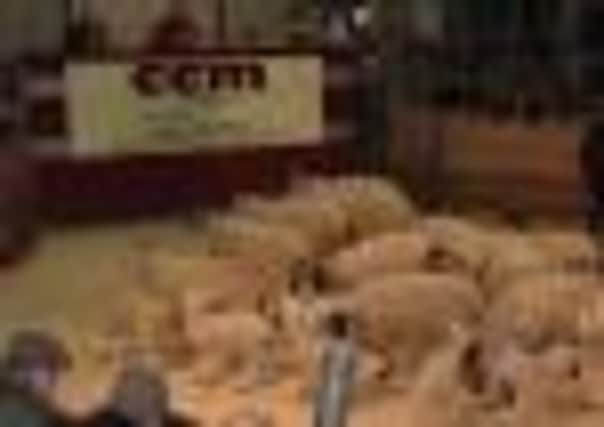Livestock market enjoyed a record-breaking year


Livestock throughput in almost all sectors at Skipton Auction Mart showed an increase on 2010, with 270,000 prime, store and breeding sheep, and 20,000 prime, store and breeding cattle and calves sold.
Total numbers of store and breeding cattle sold in 2011 represented a 10.4 per cent increase on the previous year. Cast cows were notably strong, with a 7.9 per cent rise in numbers sold. Sheep numbers included a 13.9 per cent increase in prime lambs, hoggs and cast ewes. Store sheep sales were also up by 13.9 per cent and breeding sheep up by 5.6 per cent.
Advertisement
Hide AdAdvertisement
Hide AdTed Ogden, farmstock sales manager and auctioneer, added: “Recent figures published by EBLEX illustrate that this was the first time in many years that the ‘retail price spread’ – the percentage of the final retail price that the farmer receives – was above 50 per cent. In previous years, the farmer only received 46-48 per cent of the total retail price for beef and lamb paid by consumers. However, any perceived additional benefit is more than outweighed by input costs.”
Although dairy cattle numbers were slightly down on the year, this was largely due to the fact that sales numbers in recent years were bolstered by dispersal sales of milk herds, which have decreased of late, illustrating that the national dairy herd has now reached a stable level, said Mr Ogden.
Calf trade throughout the year was buoyant, with high-end Continental-sired bull calves regularly selling at £350 to £400 and heifer calves at between £250 and £300 – such prices now the norm rather than the exception.
“With the decline in the national beef herd, this continued confidence is indicative of a shortage of cattle for beef finishers,” commented CCM general manager Jeremy Eaton.
Advertisement
Hide AdAdvertisement
Hide AdSolid sheep trade across 2011 saw prime lambs in big demand by abattoirs supplying the multiple supermarkets, local meat wholesalers and retail butchers – both traditional and ethnic.
There was also strong demand from abattoirs supplying export markets to Europe, in particular the premium market in Belgium, volume markets in France and Germany, and lighter carcasses to southern European countries.
“This demand was created by a worldwide shortage and advantageous exchange rates,” noted Mr Eaton.
Buyers from throughout the UK came to Skipton to buy store lambs, with large numbers finding homes in North Wales and the Welsh borders, once drought conditions allowed, together with the traditional feeding areas of the east and midlands.
Advertisement
Hide AdAdvertisement
Hide AdThere was good support throughout the year for the seasonal and special cattle and sheep shows, including the pedigree breed society shows and sales, which “continued to provide a high-profile stage for the region’s showmen and women”.
Ted Ogden said: “The mart is at the heart of one of the major livestock producing areas and at the confluence of roads that provide rapid access to the M1, M6 or A1.”